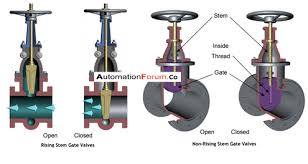Industrial valves are highly efficient devices that are used to regulate the flow of gas or liquids. They are often found in commercial construction projects or automation projects and in numerous business sectors, including oil/gas production, manufacturing, and pharmaceuticals.
Industrial valves around the world
Despite being relatively niche, the global market for Industrial Valves was valued at $65billion in 2021, and is projected to exceed $100billion by 2031.
Industrial valve types
There are six common types of industrial valve: balancing valve, ball valve, butterfly valve, gate valve, globe valve, and check valve.
Balancing valves are used to ensure that the proper flow rate is maintained and hydraulic balance is achieved. They are found in commercial heating/cooling systems, power-generation systems, and plumbing systems.
Ball valves (unsurprisingly) use a ball in order to control the flow of liquid/gas between openings. The hole is opened (fully or partially) or blocked by the ball in order to regulate the flow. These are a great choice for gases because they can offer strong and reliable seals and can support high pressures and high temperatures whilst being low-maintenance.
Butterfly valves use a metal disc within the valve to regulate the flow. The flow can be controlled using intermediate rotations and these valves can be configured to operate manually, electronically, or pneumatically. They are accurate and reliable.
Gate valves are most commonly used to isolate or block the flow, rather than regulate it. They are affixed to the pipework and can be used to either stop or start the flow. They can be made from a variety of materials, can help to save energy, and are suitable for use at high temperatures and in high-pressure conditions.
Globe valves are linear motion valves that utilise a globe-shaped disc in order to stop, start, or regulate flow. The discs can be controlled manually or automatically. These are one of the most popular types of valves because they are more ‘leak proof’ than other types and also provide a shorter opening-closing time. They are commonly used for regulation/shut-off purposes in high-temperature environments.
Check valves allow fluid to flow in one direction only. For this reason, they are also known as Non-Return Valves (NRVs). They prevent flow from reversing and are commonly found in systems where backflow could potentially cause processors or pumps to fail/shut down. They are able to sustain pressure and can operate automatically or manually.

